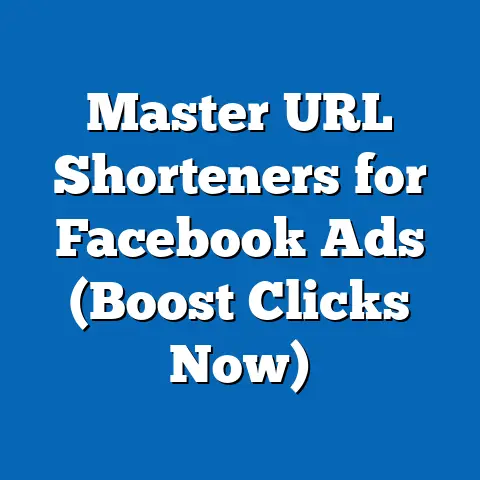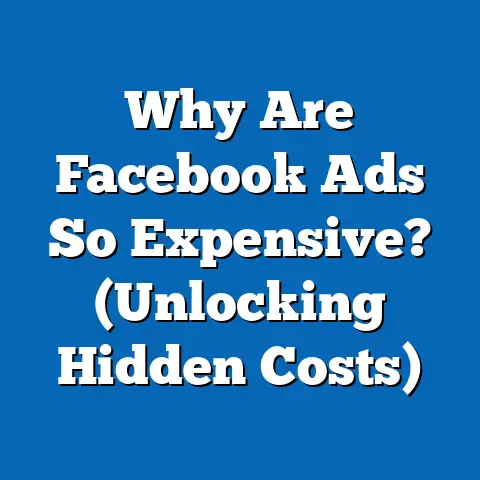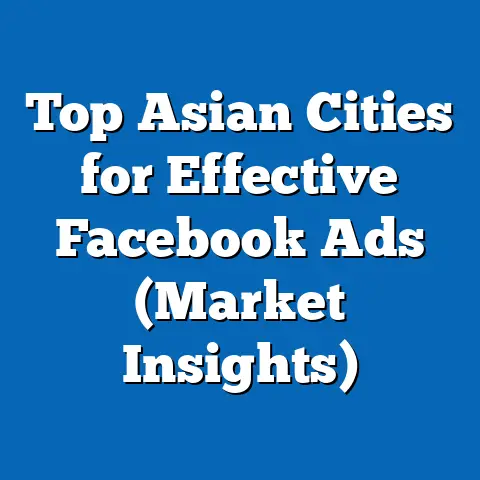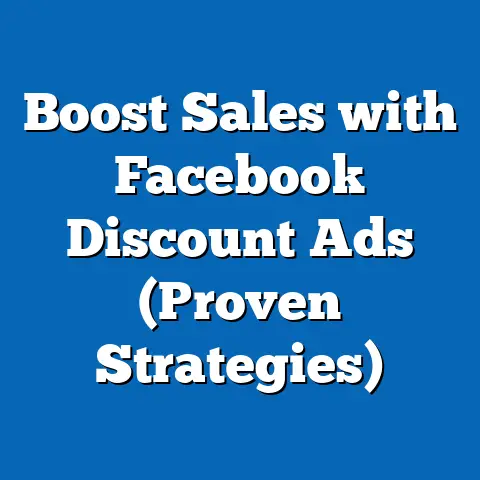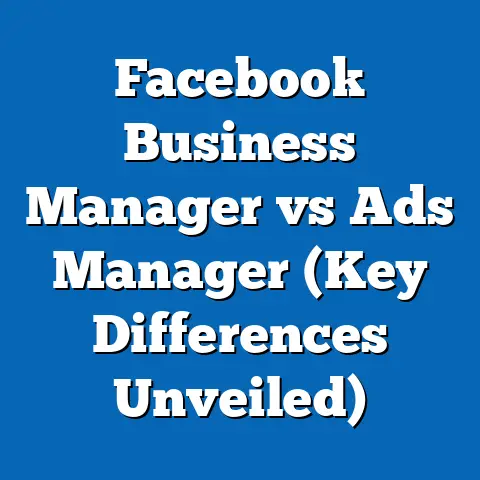Craft Powerful Facebook Ads (Expert Strategies Revealed)
In today’s digital world, businesses are constantly battling for attention. We’re bombarded with ads every time we open our laptops or scroll through our phones. The sheer volume of advertisements on platforms like Facebook means that standing out from the crowd is harder than ever. Ad fatigue is real, and it’s impacting engagement. Studies show that the average person sees between 6,000 and 10,000 ads per day. That’s a lot of noise to cut through!
The truth is, many Facebook ads simply fade into the background. They’re generic, uninspired, and ultimately ineffective. But it doesn’t have to be that way. The key to success lies in mastering expert strategies that can transform your average ads into powerful, engaging campaigns that drive real results. I’ve spent years honing these strategies, and I’m excited to share them with you. This isn’t just about creating “pretty” ads; it’s about crafting ads that resonate, convert, and ultimately grow your business. So, let’s dive in and discover how to create Facebook ads that truly stand out.
Understanding the Facebook Advertising Landscape
Facebook is a giant. With billions of active users, it offers unparalleled reach for advertisers. But reach alone isn’t enough. It’s crucial to understand the platform and how to use it effectively. First, consider Facebook’s demographics. While it’s true that Facebook has users of all ages, it’s essential to know which age groups are most active and engaged with the platform. This information helps you tailor your message to the right audience.
One of the biggest advantages of Facebook advertising is its sophisticated targeting capabilities. Facebook’s audience insights tool is a goldmine of information. You can use it to understand your target audience’s interests, behaviors, demographics, and even their purchase history. This level of detail allows you to create highly targeted ads that are more likely to resonate with your ideal customers.
Facebook offers a variety of ad formats, each with its own strengths. Photo ads are simple and effective for showcasing products or services. Video ads are excellent for telling stories and capturing attention. Carousel ads allow you to display multiple images or videos in a single ad, making them ideal for showcasing a range of products or highlighting different features. Then there are collection ads, instant experiences, and lead generation ads – each designed for specific objectives.
One of the common pitfalls I see is advertisers who don’t fully leverage Facebook’s targeting and ad format options. They create generic ads that are shown to a broad audience, resulting in low engagement and poor results. Another mistake is failing to track and analyze ad performance. Without data, it’s impossible to know what’s working and what’s not.
Takeaway: Understanding the Facebook advertising landscape is the first step to creating powerful ads. Take the time to research your target audience, explore different ad formats, and learn how to use Facebook’s audience insights tool effectively.
Crafting Compelling Ad Copy
The words you use in your Facebook ads are just as important as the visuals. Compelling ad copy is clear, relevant, and emotionally appealing. It captures the attention of your target audience and persuades them to take action. I’ve learned that the best ad copy speaks directly to the customer’s needs and desires.
A great headline is essential. It’s the first thing people see, and it needs to grab their attention immediately. Think of your headline as a promise to the reader. It should clearly communicate the benefit of your product or service. For example, instead of saying “We sell coffee,” you could say “Start your day with the best coffee in town.”
A strong call-to-action (CTA) is equally crucial. It tells people what you want them to do next. Whether it’s “Shop Now,” “Learn More,” or “Sign Up,” your CTA should be clear, concise, and action-oriented. I’ve seen conversion rates increase dramatically simply by optimizing the CTA. Don’t be afraid to test different CTAs to see which ones perform best.
Storytelling is a powerful tool in ad copy. It allows you to connect with your audience on an emotional level. Share stories about your brand, your customers, or the problem your product solves. People are more likely to remember and engage with stories than with dry facts and figures.
Let’s look at an example. A local bakery might run an ad with the following copy:
Headline: Indulge in the Sweetest Treats in Town!
Body: Craving something delicious? Our freshly baked pastries are made with love and the finest ingredients. From flaky croissants to decadent chocolate cakes, we have something to satisfy every sweet tooth. Come visit us today and experience the taste of pure happiness!
CTA: Visit Our Bakery
This ad copy is clear, relevant, and emotionally appealing. It uses descriptive language to evoke a sense of taste and smell. It also includes a strong CTA that tells people exactly what to do next.
Takeaway: Write ad copy that is clear, relevant, and emotionally appealing. Use engaging headlines, strong CTAs, and storytelling to connect with your audience.
Designing Eye-Catching Visuals
In the fast-paced world of social media, visuals are king. People scroll quickly through their feeds, and they’re more likely to stop and pay attention to an eye-catching image or video. Your visuals need to grab attention within seconds.
When designing visuals for Facebook ads, consider the following best practices:
- Use high-quality images and videos: Blurry or pixelated visuals will turn people off.
- Choose colors that stand out: Use bright, bold colors that contrast with the Facebook interface.
- Incorporate your branding: Make sure your visuals are consistent with your brand’s identity.
- Keep it simple: Avoid clutter and focus on a clear, concise message.
Video content is particularly effective on Facebook. Short, engaging videos can capture attention and tell a story in a way that images simply can’t. Consider creating tutorials, behind-the-scenes looks, or customer testimonials. The optimal length for a Facebook video ad is typically between 15 and 30 seconds.
Testing different visual styles is crucial. What works for one audience may not work for another. Experiment with different images, videos, and layouts to see what resonates best with your target audience.
For example, an e-commerce store selling clothing might create a video ad showcasing their latest collection. The video could feature models wearing the clothes in different settings, set to upbeat music. The ad copy could highlight the quality and style of the clothing, while the CTA could encourage people to “Shop Now.”
I once worked with a client who was struggling to get results from their Facebook ads. Their visuals were bland and uninspired. We redesigned their ads with vibrant, eye-catching images and saw a significant increase in click-through rates and conversions. It was a powerful reminder of the importance of visuals.
Takeaway: Invest in high-quality visuals that capture attention and communicate your message effectively. Experiment with different styles and formats to see what resonates best with your target audience.
Targeting and Retargeting Strategies
Targeting is where Facebook advertising really shines. You can target your ads to specific groups of people based on their demographics, interests, behaviors, and more. This allows you to reach the people who are most likely to be interested in your product or service.
Facebook offers several advanced targeting options:
- Custom Audiences: Create custom audiences based on your existing customer data. You can upload a list of email addresses or phone numbers, and Facebook will match them to users on the platform.
- Lookalike Audiences: Create lookalike audiences based on your custom audiences. Facebook will identify users who share similar characteristics with your existing customers, allowing you to reach new people who are likely to be interested in your product or service.
- Interest-Based Targeting: Target users based on their interests, hobbies, and activities. Facebook tracks users’ behavior on the platform, allowing you to reach people who are interested in specific topics.
Segmenting your audiences is essential. Don’t show the same ad to everyone. Create tailored ads for different groups based on their demographics, interests, and behaviors. This will increase the relevance of your ads and improve your results.
Retargeting is a powerful strategy for re-engaging users who have interacted with your brand but haven’t converted. You can retarget users who have visited your website, watched your videos, or engaged with your Facebook page. Show them ads that are relevant to their previous interactions with your brand.
I remember working with a software company that was struggling to generate leads. We implemented a retargeting strategy that targeted users who had visited their website but hadn’t signed up for a free trial. We showed them ads highlighting the benefits of the software and offering a special discount. This resulted in a significant increase in leads and conversions.
Takeaway: Use Facebook’s advanced targeting options to reach the right people with the right message. Segment your audiences and create tailored ads for different groups. Implement a retargeting strategy to re-engage users who have interacted with your brand.
Measuring Success and Optimizing Ads
Measuring the success of your Facebook ads is crucial. Without data, you’re flying blind. You need to track key metrics to understand what’s working and what’s not.
Some of the most important metrics to track include:
- Click-Through Rate (CTR): The percentage of people who click on your ad after seeing it. A high CTR indicates that your ad is relevant and engaging.
- Conversion Rate: The percentage of people who take a desired action after clicking on your ad. This could be anything from making a purchase to signing up for a newsletter.
- Return on Ad Spend (ROAS): The amount of revenue you generate for every dollar you spend on advertising. A high ROAS indicates that your ads are profitable.
Facebook Ads Manager is your go-to tool for tracking performance and gaining insights into audience behavior. It provides a wealth of data on your ad campaigns, including impressions, clicks, conversions, and more. Use this data to identify trends and patterns.
A/B testing is essential for optimizing your ads. Test different headlines, ad copy, visuals, and CTAs to see what performs best. Make small changes and track the results. Over time, you’ll be able to identify the winning combinations that drive the best results.
Remember, Facebook advertising is an ongoing process. You need to continually track your performance, analyze your data, and adjust your strategies based on what you learn. Don’t be afraid to experiment and try new things. The key is to stay flexible and adapt to the ever-changing landscape of social media.
Takeaway: Track key metrics to measure the success of your Facebook ads. Use Facebook Ads Manager to gain insights into audience behavior. Implement A/B testing to optimize your performance continuously.
Conclusion
Crafting powerful Facebook ads is a combination of art and science. It requires a deep understanding of your target audience, a creative approach to ad copy and visuals, and a data-driven mindset for optimization. By combining compelling ad copy, eye-catching visuals, effective targeting, and continual optimization, you can transform your Facebook ads into powerful, engaging campaigns that drive real results.
It takes time, effort, and a willingness to learn and adapt, but the rewards are well worth it. So, put these strategies into practice, track your results, and watch your ad campaigns transform. I’ve seen firsthand how these strategies can help businesses of all sizes achieve their advertising goals. Now it’s your turn. Go out there and create some truly powerful Facebook ads!

